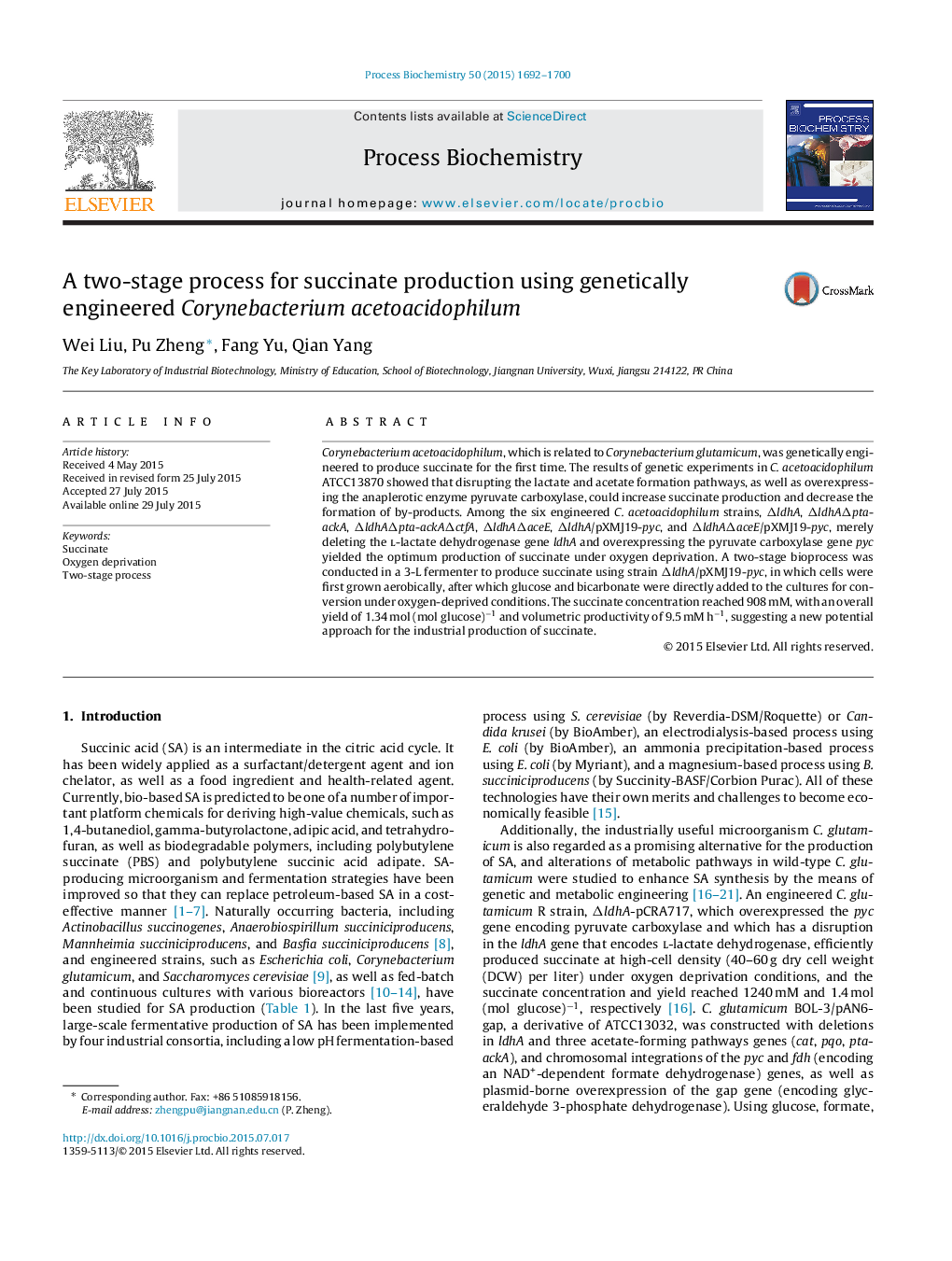| Article ID | Journal | Published Year | Pages | File Type |
|---|---|---|---|---|
| 34266 | Process Biochemistry | 2015 | 9 Pages |
•C. acetoacidophilum was first genetically engineered for succinate production.•A two-stage bioprocess using strain C. acetoacidophilum ΔldhA/pXMJ19-pyc was developed.•The succinate concentration reached 908 mM with a yield of 1.34 mol (mol glucose)−1.
Corynebacterium acetoacidophilum, which is related to Corynebacterium glutamicum, was genetically engineered to produce succinate for the first time. The results of genetic experiments in C. acetoacidophilum ATCC13870 showed that disrupting the lactate and acetate formation pathways, as well as overexpressing the anaplerotic enzyme pyruvate carboxylase, could increase succinate production and decrease the formation of by-products. Among the six engineered C. acetoacidophilum strains, ΔldhA, ΔldhAΔpta-ackA, ΔldhAΔpta-ackAΔctfA, ΔldhAΔaceE, ΔldhA/pXMJ19-pyc, and ΔldhAΔaceE/pXMJ19-pyc, merely deleting the l-lactate dehydrogenase gene ldhA and overexpressing the pyruvate carboxylase gene pyc yielded the optimum production of succinate under oxygen deprivation. A two-stage bioprocess was conducted in a 3-L fermenter to produce succinate using strain ΔldhA/pXMJ19-pyc, in which cells were first grown aerobically, after which glucose and bicarbonate were directly added to the cultures for conversion under oxygen-deprived conditions. The succinate concentration reached 908 mM, with an overall yield of 1.34 mol (mol glucose)−1 and volumetric productivity of 9.5 mM h−1, suggesting a new potential approach for the industrial production of succinate.
Graphical abstractFigure optionsDownload full-size imageDownload as PowerPoint slide
